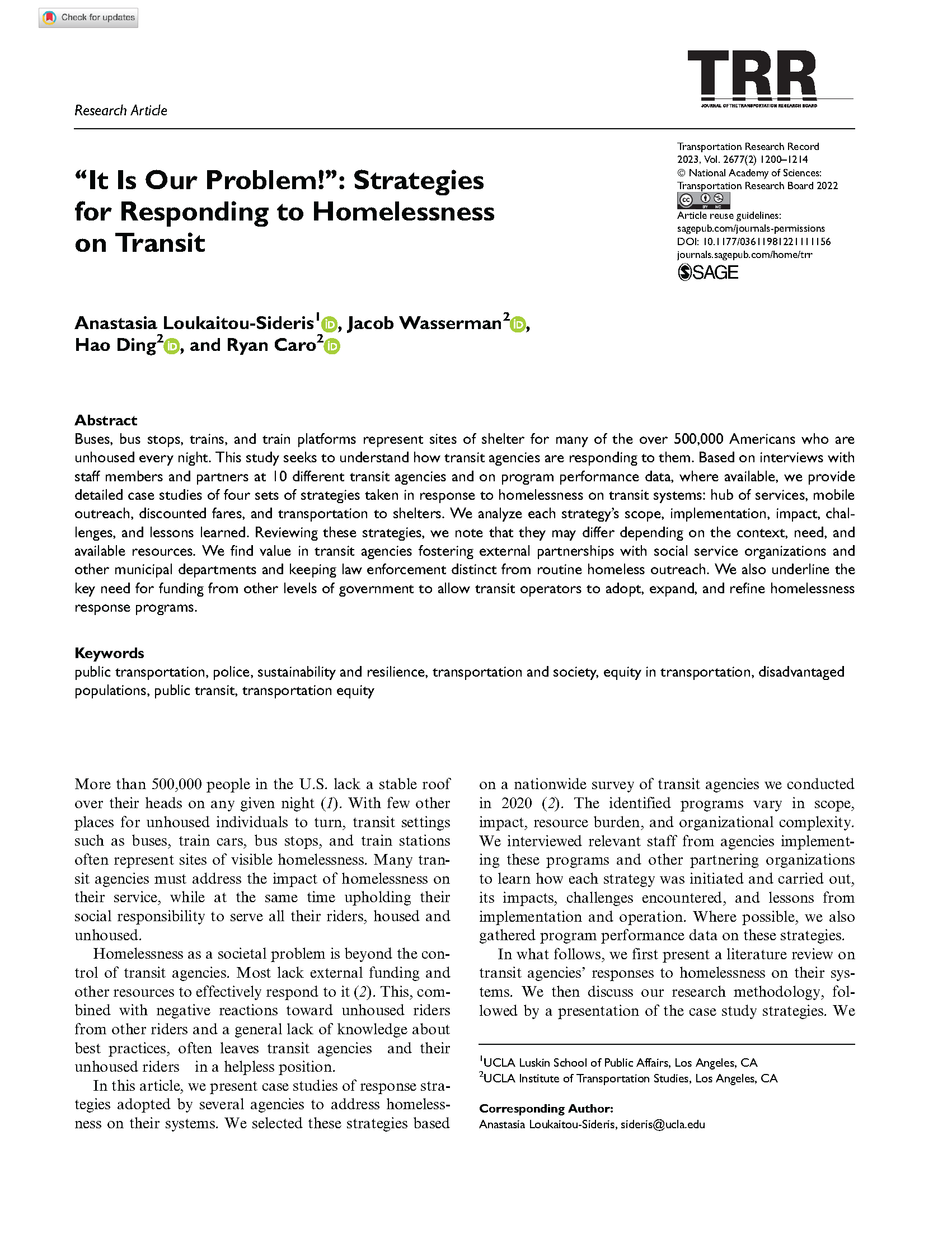Date: February 1, 2023
Author(s): Anastasia Loukaitou-Sideris, Jacob L. Wasserman, Hao Ding, Ryan Caro
Abstract
Buses, bus stops, trains, and train platforms represent sites of shelter for many of the over 500,000 Americans who are unhoused every night. This study seeks to understand how transit agencies are responding to them. Based on interviews with staff members and partners at 10 different transit agencies and on program performance data, where available, we provide detailed case studies of four sets of strategies taken in response to homelessness on transit systems: hub of services, mobile outreach, discounted fares, and transportation to shelters. We analyze each strategy’s scope, implementation, impact, challenges, and lessons learned. Reviewing these strategies, we note that they may differ depending on the context, need, and available resources. We find value in transit agencies fostering external partnerships with social service organizations and other municipal departments and keeping law enforcement distinct from routine homeless outreach. We also underline the key need for funding from other levels of government to allow transit operators to adopt, expand, and refine homelessness response programs.
About the Project
More than half a million individuals experience homelessness every night in the U.S. With the scale of the crisis often surpassing the capacities of existing safety nets — all the more so since the onset of the COVID-19 pandemic — many turn to transit vehicles, stops, and stations for shelter. Many also use transit to reach destinations such as workplaces, shelters, and community service centers. This project investigates the intersections of the pandemic, transit, and homelessness; the scale of homelessness on transit; and how transit agencies are responding to the problem. All told, centering the mobility and wellbeing of unhoused riders fits within transit’s social service role and is important to improving outcomes for them and for all riders.


